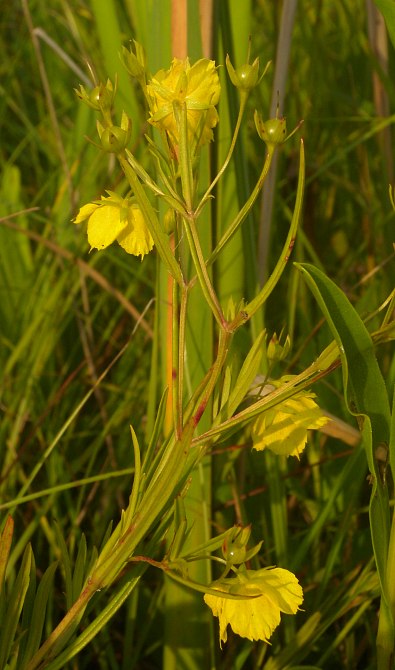
The upper surface of these leaves is olive green, medium green, or dark green, while their lower surface is either the same shade or slightly lighter shade of green. The leaves are generally hairless, although the bases of the primary leaves often have a few spreading white hairs. The primary leaves have prominent central veins. From 1–5 flowers develop from the axils of middle to upper primary leaves. The slender pedicels of these flowers are ¼–1½" (6–35 mm.) in length, erect to ascending, light green to olive green, and hairless. The flowers at the tips of these pedicels are ¾–1" across. Each flower has a yellow corolla with 5 lobes, a smaller light green calyx with 5 lobes, 5 stamens with yellow anthers, and a light green ovary with a single slender style. The lobes of the corolla are orbicular-obovate in shape and partially overlapping; the outer margins of these lobes often taper abruptly into short narrow tips. In addition, the outer margins of these lobes are often irregular and bluntly ragged (or scalloped). Tiny red dots are often widely scattered across the face of the corolla lobes. The lower one-third of these lobes is often covered with minute glandular secretions consisting of floral oil (a 10x hand lens may be required). The lobes of the calyx are 4–6 mm. long, lanceolate in shape, hairless, and 3-veined. The filaments of the stamens are 2–3 mm. long and glandular-hairy.
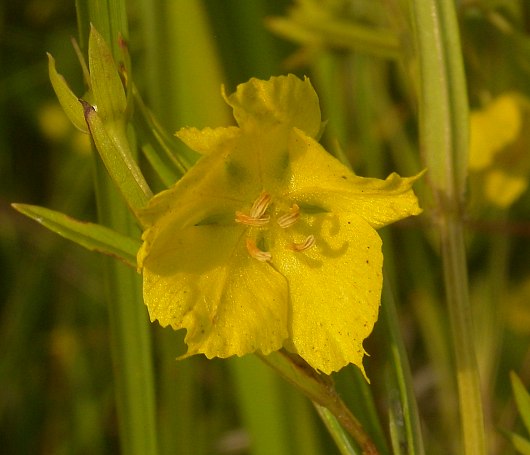
The blooming period occurs from early to late summer, lasting about 3 weeks for a colony of plants. Afterwards, the flowers are replaced by globoid seed capsules that are 3.5–5 mm. across. Each seed capsule has 5 sections, which later split open to release numerous tiny seeds. Individual seeds are 1–1.5 mm. long, dark brown or reddish brown, 3-angled, and irregularly ellipsoid, oblongoid, or rhomboid in shape; one of the 3 sides of each seed is slightly concave. The root system is fibrous and slender-rhizomatous. Occasionally, small colonies of clonal plants develop from the rhizomes.
Cultivation: The preference is full sun or partial sun, consistently wet to moist conditions, and calcareous ground containing loam, sand, or gravel. The ability of this plant to tolerate competition from other ground vegetation is somewhat limited.
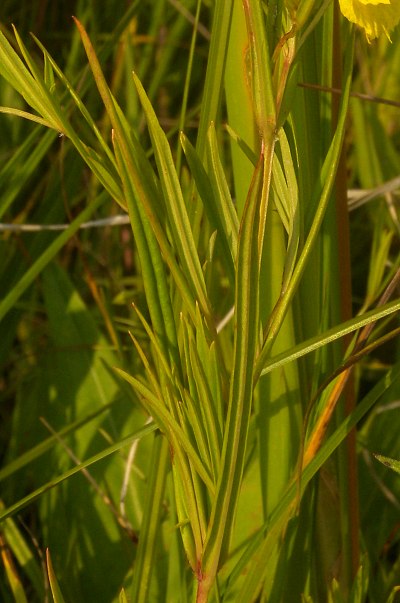
Range & Habitat: The native Prairie Loosestrife (Lysimachia quadriflora) is uncommon to occasional in central and northern Illinois, while in the southern section of the state it is rare (see Distribution Map). This plant is distributed primarily in Midwestern USA and adjacent areas of Canada; it is also widely scattered in areas further to the south and east. Habitats include wet to moist black soil prairies, wet to moist sand prairies, wet to moist dolomite prairies, calcareous sand flats near Lake Michigan, openings in bottomland woodlands, seepy banks of rivers and streams, fens, hillside seeps and springs, swamps, bases of limestone cliffs, and ditches. Populations of this conservative plant have declined because of habitat destruction. In Illinois today, Prairie Loosestrife is found primarily in high quality wetlands that remain unsuitable for agriculture and other kinds of development.
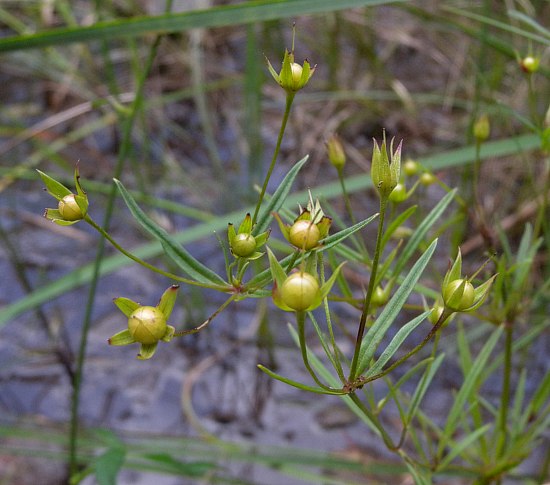
Faunal Associations: The flowers of Prairie Loosestrife (Lysimachia quadriflora) are cross-pollinated by oligolectic Melittid bees, such as Macropis steironematis and other Macropis spp. These bees collect the floral oil and pollen of the flowers in order to make pollen balls that are fed upon by their larvae. The flowers are also visited by generalist Halictid bees (Lasioglossum spp.) that collect pollen. A relatively small number of insects are known to feed on the foliage, pith of stems, and other other parts of Loosestrife species (Lysimachia spp.). These insect feeders include the larvae of Dasineura lysimachiae (Loosestrife Bud Gall Midge), the larvae of a sawfly (Monostegia abdominalis), and the larvae of such moths as the Loosestrife Borer Moth (Papaipema lysimachiae), Blurry-patched Nola (Nola cilicoides), and Sparkling Aterpia (Aterpia approximana). Other insects that reportedly feed on these species include an aphid (Macrosiphum pseudorosae), a leafhopper (Rossmoneura carbonata), and a plant bug (Polymerus punctipes). At present, no information is available about this plant's relationships to vertebrate animals.
Photographic Location: A fen at Bluff Spring Fen Nature Preserve in Cook County, Illinois, and a gravelly hillside seep and stream at Turkey Run State Park in west-central Indiana.
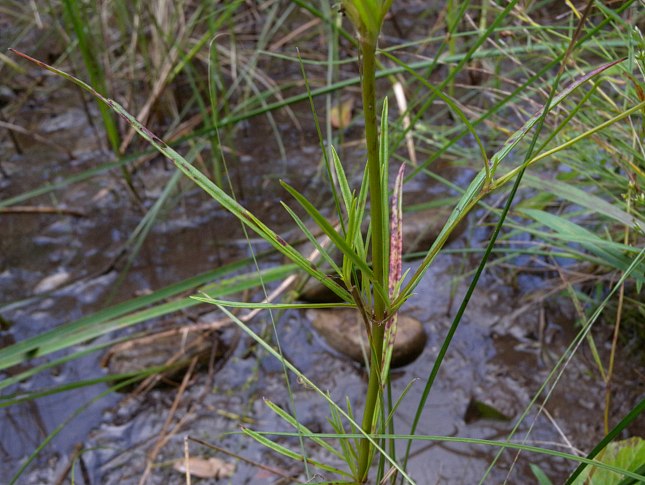
Comments: Prairie Loosestrife (Lysimachia quadriflora) differs from other Loosestrife species (Lysimachia spp.) within the state by its very narrow leaves, making it relatively easy to identify, especially when its yellow flowers are produced. On rare occasions, plants of this species produce cream-colored or white flowers. The nodding flowers of Prairie Loosestrife are similar to those of many other Loosestrife species. The flowers of these plants are highly unusual because they produce floral oil, rather than nectar, and they are cross-pollinated primarily by bees that are specialist pollinators (Macropis spp.). Because this plant doesn't occur in prairies as often as it used to (largely because almost all of the the original prairie habitat in Illinois has been destroyed), some authors refer to Lysimachia quadriflora as Narrow-leaved Loosestrife and Fen Loosestrife. This Loosestrife species should not be confused with another Loosestrife species with a similar name, Lysimachia quadrifolia (Whorled Loosestrife). This latter species has whorls of wider leaves; it is found primarily in woodlands further to the east. A scientific synonym of Prairie Loosestrife is Steironema longifolium.